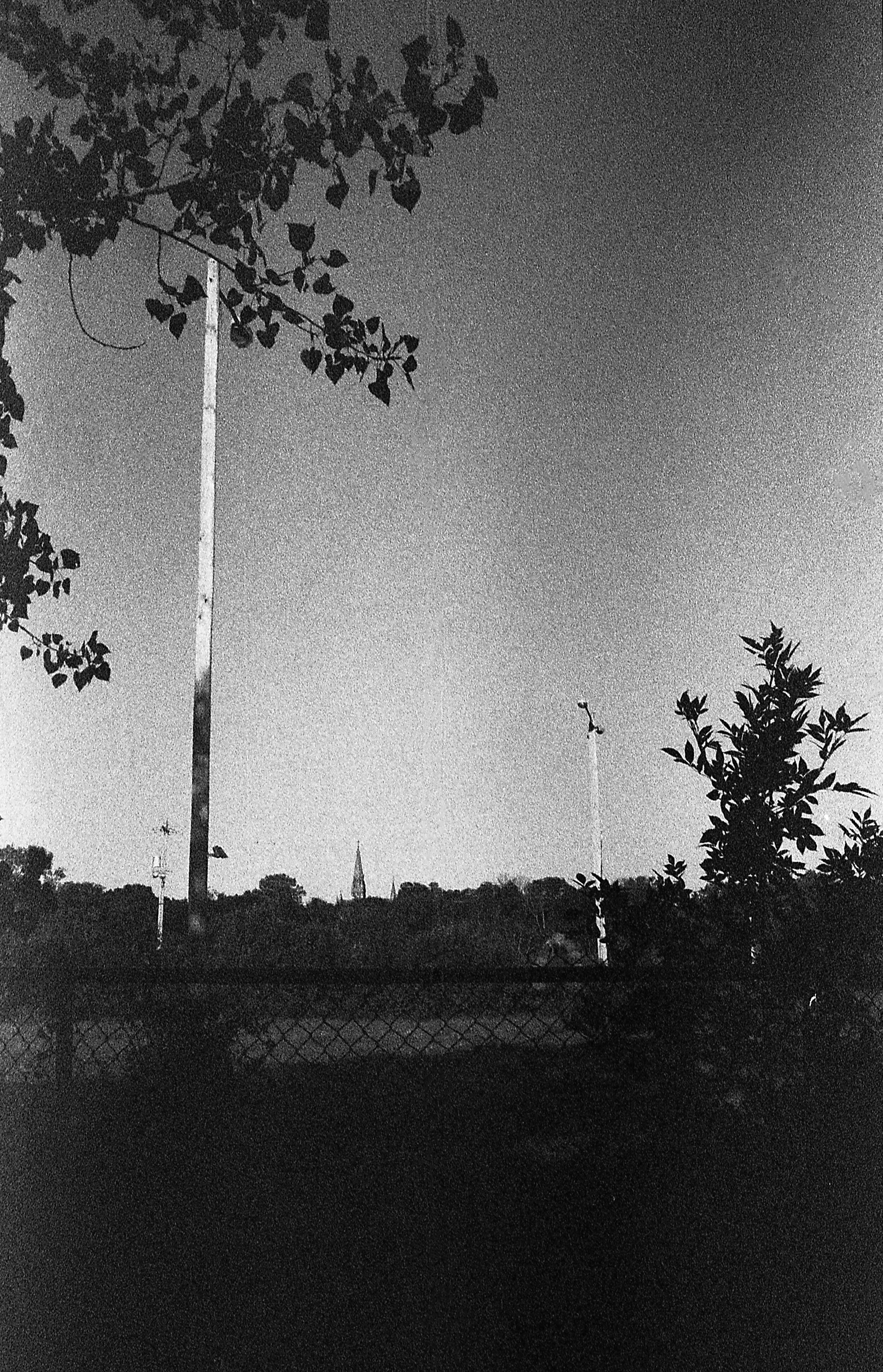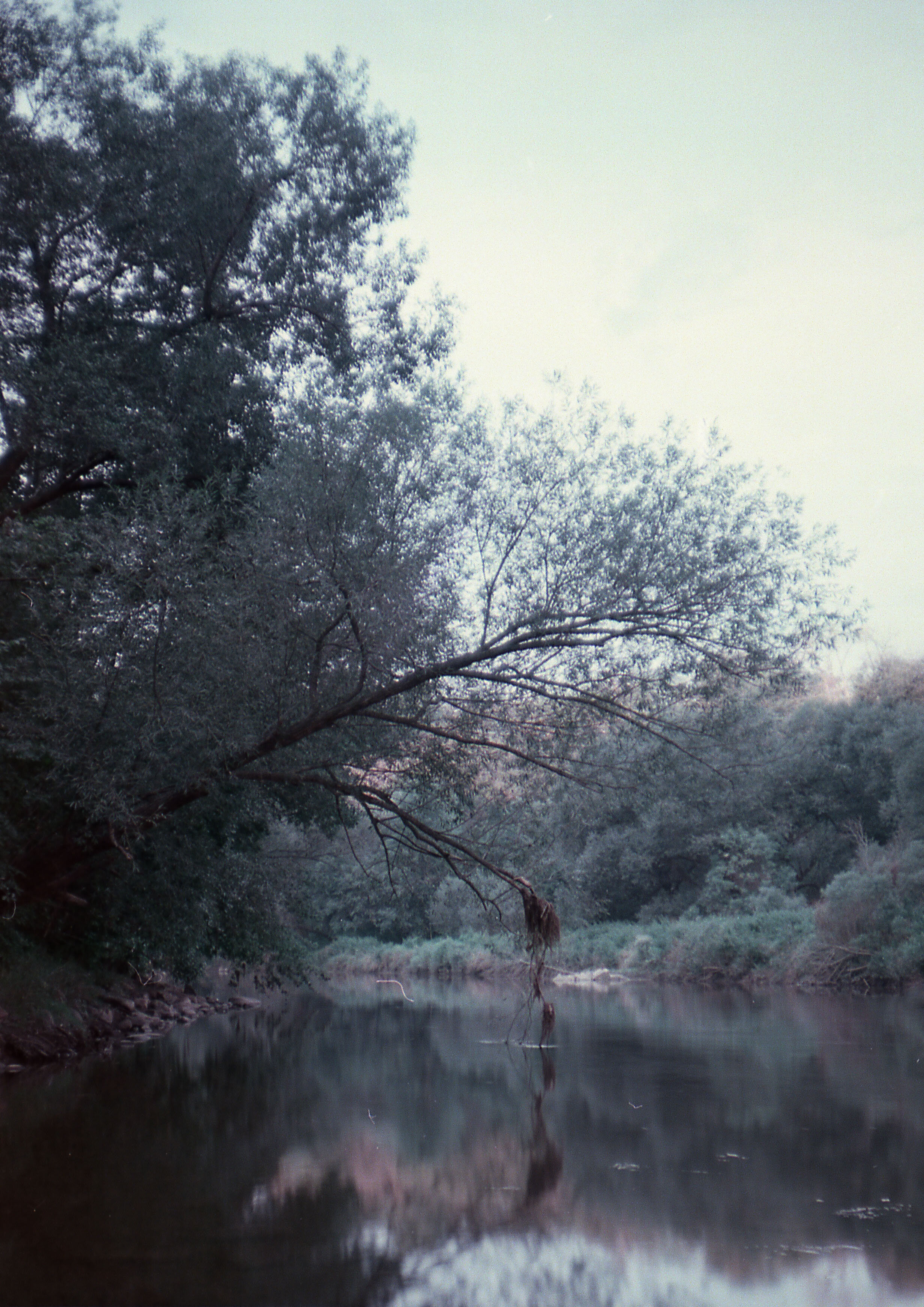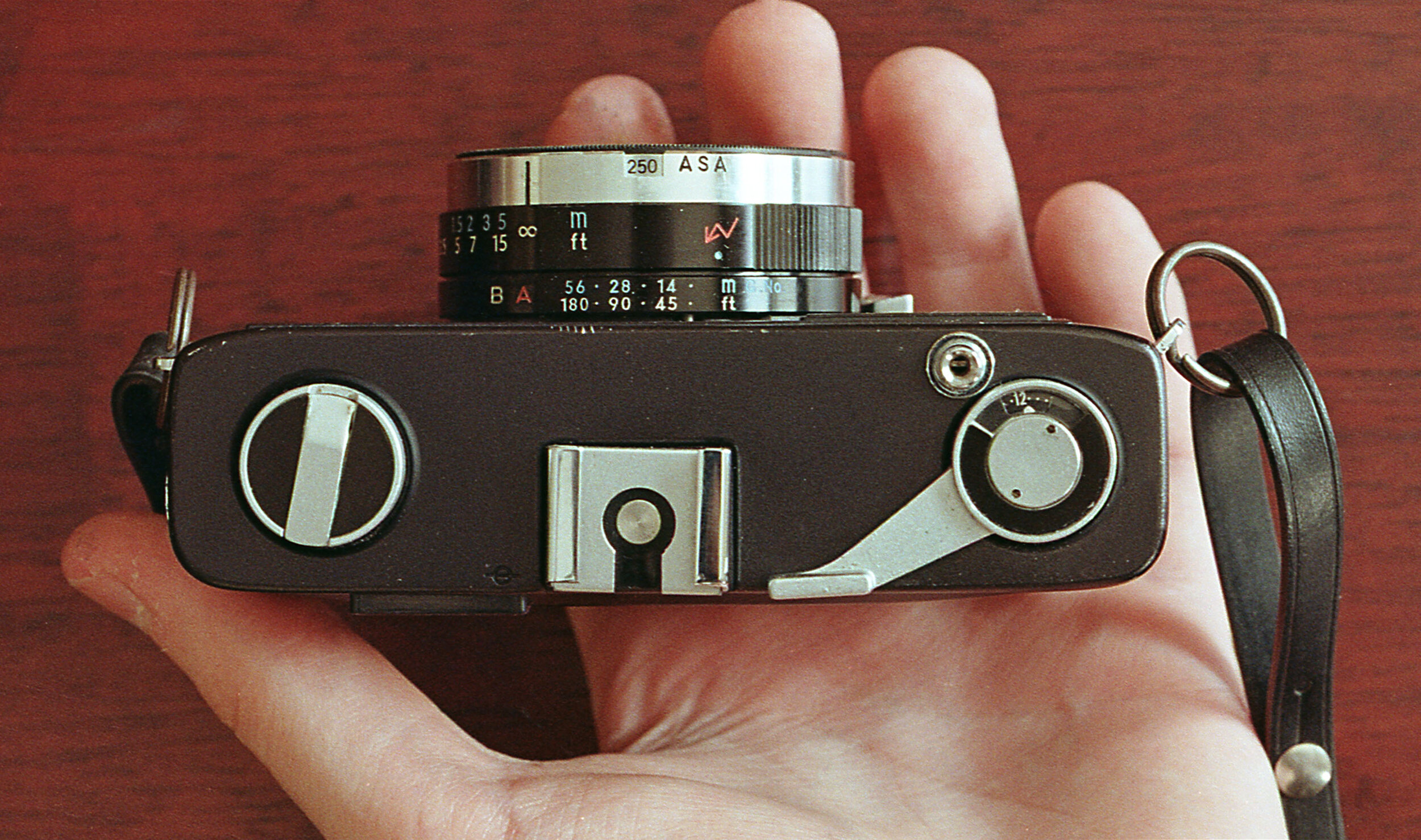September 26TH 2021
GAF Memo 35 EE
As the photography market started to change and Ansco’s cameras started to look dated, Ansco decided to completely change their business model. The focus shifted from creating cameras to rebranding other manufacturer’s cameras. In the late 1960s, Ansco changed their name to GAF and for around 20 years and began rebranding a variety of Chinon, Ricoh, and Petri cameras. One such camera to be rebranded was a small auto exposure rangefinder from Chinon. This was the 1971 GAF Memo 35 EE.
The Memo Rangefinder
Online, the consensus is 1979 or around 1975 when the Memo 35 EE was released. However, I was able to find an ad for the camera in Popular Mechanics magazine dated January 1972, inside of the ‘New in Photography’ section. This issue was written at the very latest in December of 1971, so I would guess that GAF released this camera during the holidays of 1971.
When you're looking at a GAF camera, it has a specific look and feel to it. Whether it’s an L series SLR or even one of the 16mm movie cameras, GAF has a distinct style. Carrying on in this likeness, the GAF Memo 35 EE takes the silver Chinon 35 EE and fits it into an all black and chrome, sleeker style. At a glance, the camera has no color, but the details in the lens and controls have red and light blue accents. Additionally, there are a few variations of this and the original Chinon camera. I believe these are only cosmetic changes, and the internals of the camera are identical.
The Memo EE is a fully auto exposure camera with a focusing rangefinder. All exposure controls, besides the ASA, are taken care of by the camera. As you look through the viewfinder of the Memo EE, you have a rangefinder focusing patch in the center, with parallax correction lines, and an exposure scale to the right. The shutter speeds and apertures are coupled and have over/under exposure areas at the top and bottom. The Memo EE runs on the long extinct 1.3 volt PX-675, but an LR44 works and fits perfectly as a replacement. When no batteries are installed, the camera can still be used in bulb, or in automatic mode at 1/30th of a second at f/2.7. Please note that the meter is always taking a reading, so you will need to cap the lens to conserve battery life.
Looking at the top, you have a hot shoe with a corresponding PC socket on the left side of the camera. To the left of the shoe is a standard rewind crank, also used to open the back as you pull it up. On the right of the shoe is the threaded shutter release and winding lever with frame counter. Nothing is of note on the back, but underneath the camera, you have a tripod socket in the center with a rewind release button to the left, and a battery compartment to the right.
Moving to the front of the camera, this is where your controls are. For the lens, GAF has a reasonably wide 38mm f/2.7, Chinon branded lens. Looking down at the lens barrel from the top, the ring closest to the body is the mode selection. There is a small metal tab, located at the bottom of the lens, that locks after you press and rotate it into one of the settings. You have B (bulb), A (automatic), and flash guide numbers. When in Automatic mode, you have a shutter speed and aperture range of 1/30th of a second at f/2.7 up to 1/650th of a second at f/14, and bulb leaves the shutter open with the aperture fixed at f/2.7. When using the flash, you have to line up the intended distance with the flash icon on the barrel. This will limit the focusing scale mechanically and keep you within the focusing range for flash. Next in line is the focusing control going from infinity and 15 feet to 3.5 feet, with an impressively short throw. At the end of the lens is the ASA/DIN setting. ASA is visible from the top and DIN from the bottom of the lens. The ASA scale is from 25 to 500 with a variety of uncommon film speeds in between. Lastly, there is a self timer on the front side of the camera, lasting around eight seconds.
THE SPECS AND FEATURES
Shutter Speeds - 1/30th to 1/650th (coupled to aperture)
Aperture - f/2.7 to f/14 (coupled to shutter speed)
Meter Type - CDS
Shutter - leaf shutter, electro-mechanical
ASA - 25 to 500
(25, 32, 40, 50, 64, 80, 100, 125, 160, 200, 250, 320, 400, 500)
Lens - Chinon 38mm f/2.7
Flash Option - hot shoe or PC socket, flash setting and distance guide
Batteries - 1.3 volt PX-675 (LR44 works as replacement)
Film Type - 35mm
Other Features - coupled shutter speeds and apertures
The Experience
I found myself looking at this camera in its various Argus, Chinon, and GAF forms. I was in search of a smaller rangefinder to carry around, but nothing too eye catching. The prices were a bit too high for me, so I spent about a year waiting for a good deal or repair camera to show up. I am a huge fan of the Minolta Hi-Matic F, and this camera looked incredibly similar to me. An untested camera showed up online and I jumped at the opportunity. The Memo 35 EE arrived in great condition, and I started out with a few checks.
I cleaned up the camera and checked if the shutter/aperture was working. Everything seemed in order and I was impressed with how well this camera held up over the years. However, The rangefinder needed some adjustment, along with cleaning the inside viewfinder elements. Once again no issues, but that was until I was checking to make sure the meter was responding correctly to light. I was getting no reading from the meter. Checking the shutter and aperture proved it was working internally, so I disassembled the top cover again and found that the exposure meter needle in the viewfinder was missing. This is an incredibly small and delicate piece that was attached to the spring mechanism of the metering system. I’ve dealt with similar issues before and had some experience to know this would not be easy. I really enjoy a repair challenge, but meters can sure be finicky. My major concern was that the needle needed to be light enough so that it would not throw the meter reading off.
What I tried was very thin gauge solid core wire to fashion a needle. There were parts left of the mounting point, and I had to figure a light way of adhering the wire to the mechanism. I preferred solder, but heating up the mechanism scared me. A lot of cameras use this design and if something goes wrong, the camera is much harder to repair, if at all possible. I decided to use the smallest bit of glue and held the needle until it set. I reassembled the camera and let the mechanism fully dry overnight, looking forward to a test the next day.
The meter was working great, but there was another problem… the needle was way off from the zero position. I had to disassemble the camera again, and ever so slightly bend the needle to align with the spot. I was hesitant on if this would cause the other section of the meter to misalign and create a bigger problem, but I anchored a lower point and bent the needle without issue. When it was all said and done, it was nerve-racking but I pulled it off. I now had a fully working GAF Memo 35 EE, and I was ready to start shooting.
I shot quite a few rolls through the Memo 35 EE and even found myself using it for testing a roll of 20 year old Agfa APX and some low ISO cinema film. Through the multiple rolls shot, I found the Chinon 38mm lens to be a very impressive piece of glass. The more cameras I work through, the more sub genres I find and this camera falls into that interesting niche of an auto exposure rangefinder. It’s perfect for if you want an auto everything camera but with the ability to control the focus. I’ve run through a handful of these types of cameras over the years, and the GAF Memo 35 EE holds up in every aspect. If your looking for a new rangefinder, a Hi-Matic alternative, or are a fan of compact cameras, I highly recommend the GAF Memo 35 EE and its other variations.











